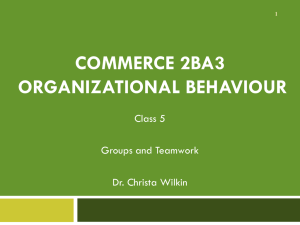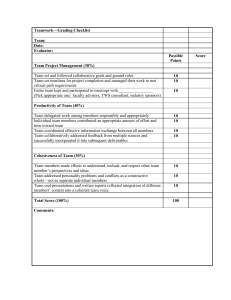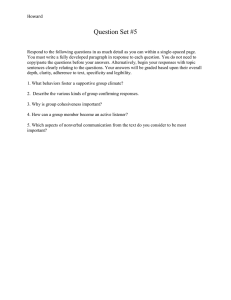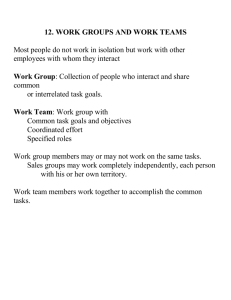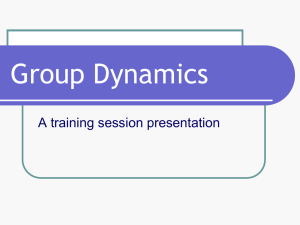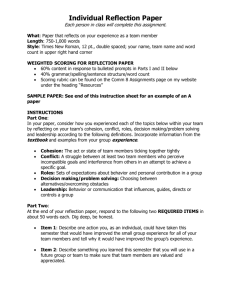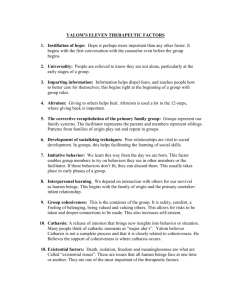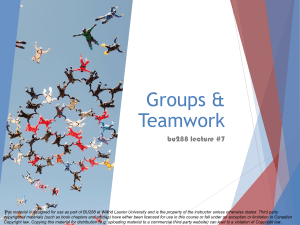MGMT 3080 05 Team Cohesiveness Key Points
advertisement
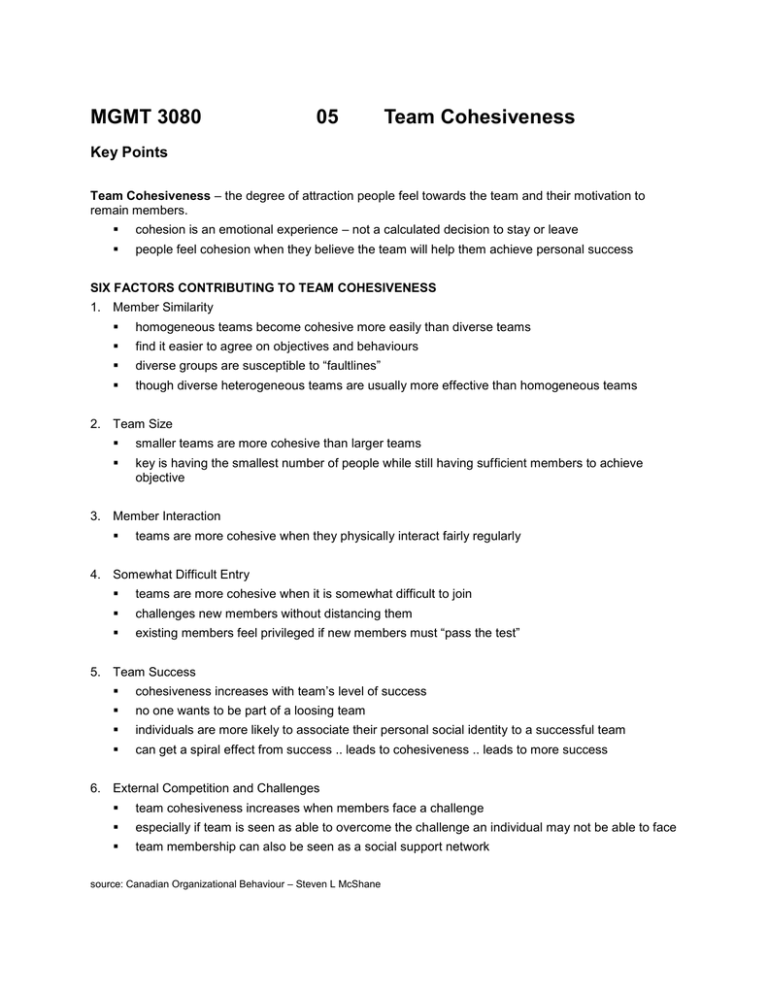
MGMT 3080 05 Team Cohesiveness Key Points Team Cohesiveness – the degree of attraction people feel towards the team and their motivation to remain members. cohesion is an emotional experience – not a calculated decision to stay or leave people feel cohesion when they believe the team will help them achieve personal success SIX FACTORS CONTRIBUTING TO TEAM COHESIVENESS 1. Member Similarity homogeneous teams become cohesive more easily than diverse teams find it easier to agree on objectives and behaviours diverse groups are susceptible to “faultlines” though diverse heterogeneous teams are usually more effective than homogeneous teams 2. Team Size smaller teams are more cohesive than larger teams key is having the smallest number of people while still having sufficient members to achieve objective 3. Member Interaction teams are more cohesive when they physically interact fairly regularly 4. Somewhat Difficult Entry teams are more cohesive when it is somewhat difficult to join challenges new members without distancing them existing members feel privileged if new members must “pass the test” 5. Team Success cohesiveness increases with team’s level of success no one wants to be part of a loosing team individuals are more likely to associate their personal social identity to a successful team can get a spiral effect from success .. leads to cohesiveness .. leads to more success 6. External Competition and Challenges team cohesiveness increases when members face a challenge especially if team is seen as able to overcome the challenge an individual may not be able to face team membership can also be seen as a social support network source: Canadian Organizational Behaviour – Steven L McShane add your own notes/details – and go beyond simple recall KNOWLEDGE.
